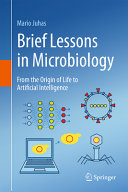

Most ebook files are in PDF format, so you can easily read them using various software such as Foxit Reader or directly on the Google Chrome browser.
Some ebook files are released by publishers in other formats such as .awz, .mobi, .epub, .fb2, etc. You may need to install specific software to read these formats on mobile/PC, such as Calibre.
Please read the tutorial at this link: https://ebookbell.com/faq
We offer FREE conversion to the popular formats you request; however, this may take some time. Therefore, right after payment, please email us, and we will try to provide the service as quickly as possible.
For some exceptional file formats or broken links (if any), please refrain from opening any disputes. Instead, email us first, and we will try to assist within a maximum of 6 hours.
EbookBell Team

5.0
108 reviewsThe first part tells the story of the beginnings of microbiology itself and introduces the reader to the founders of this fascinating research discipline. The second part focuses on communication between microorganisms and how they organize themselves into fascinating microbial cities called “biofilms”. The reader also learns how bacteria exchange genetic material - mechanisms that are the root of the emergence of multidrug-resistant superbugs, pathogens that pose a major burden to human health and our healthcare systems. The third part is devoted to the latest techniques being used by scientists to study, control, and manipulate microorganisms for our benefit. The final part links the first three parts together and highlights how infectious diseases, including coronaviruses, can be transmitted from animals to humans, how global warming is affecting emerging diseases, and provides information on the actions that need to be taken to get ahead of pathogenic microbes and future pandemics.
This comprehensive, state-of-the-art book is intended for anyone interested in microbiology and epidemiology, from biology and biomedical students in schools and colleges, to patients suffering from infectious diseases who want to learn more about their condition.
The concepts covered in this book contribute to UN Sustainable Development Goal 3: Health and Well-Being.